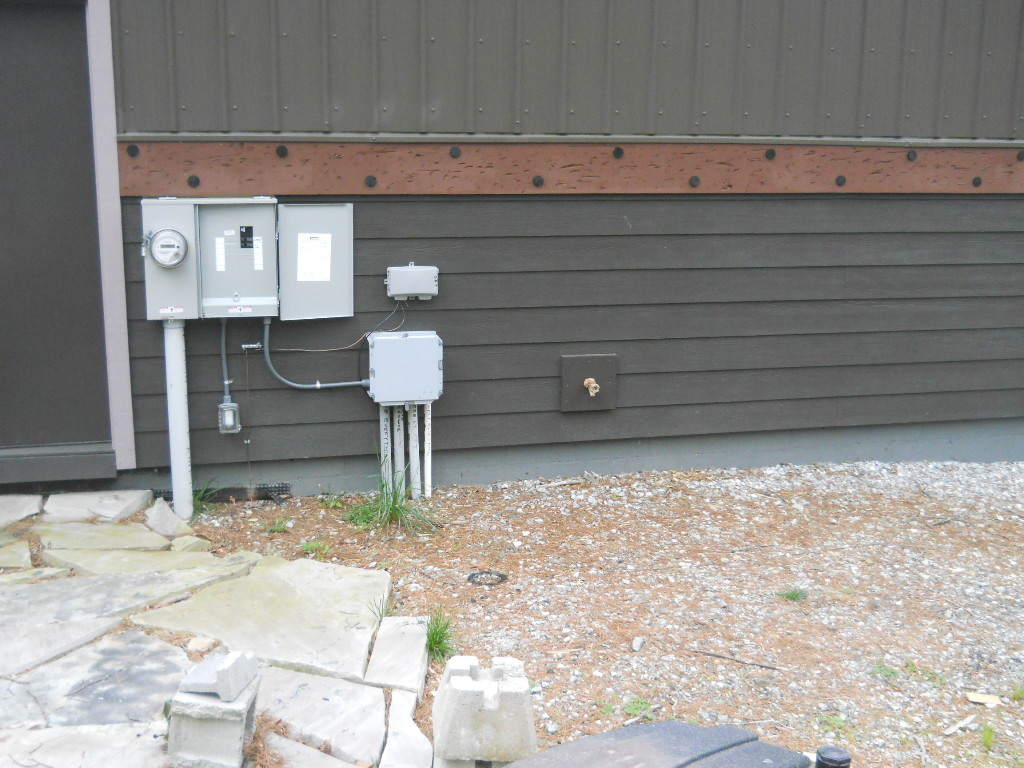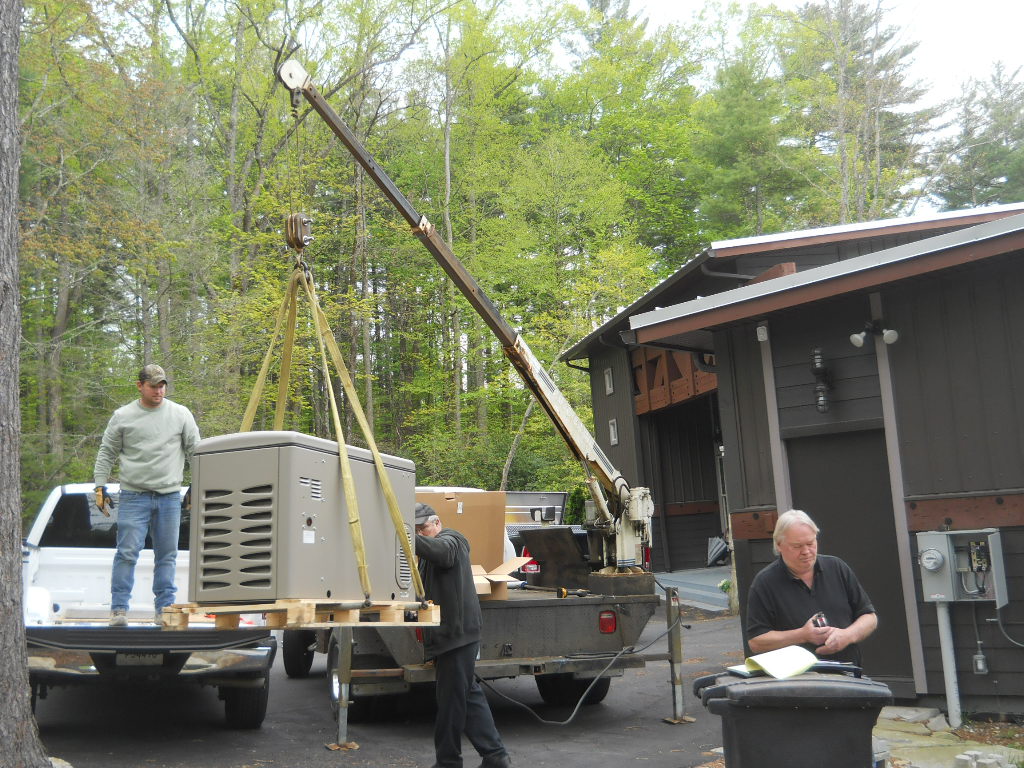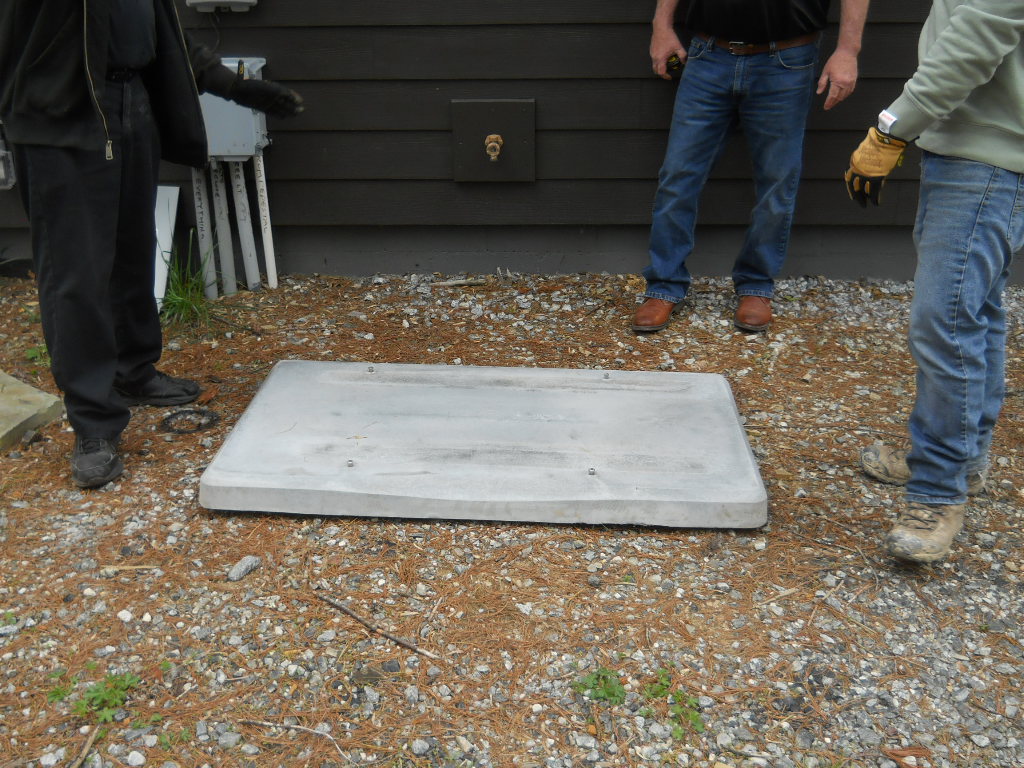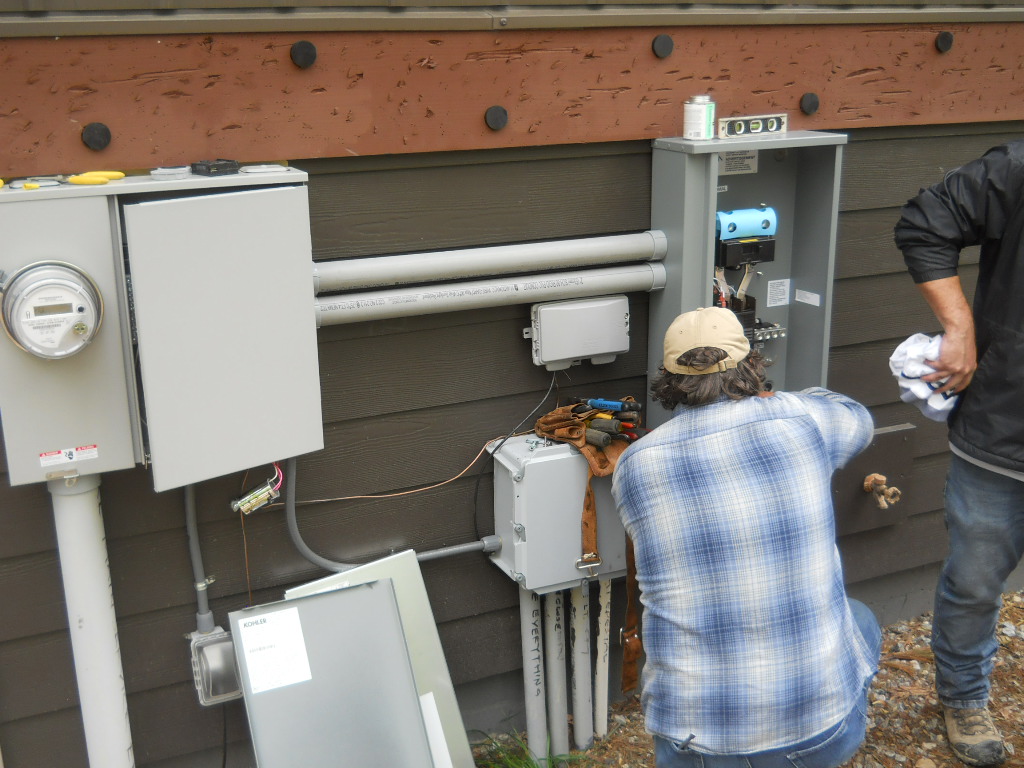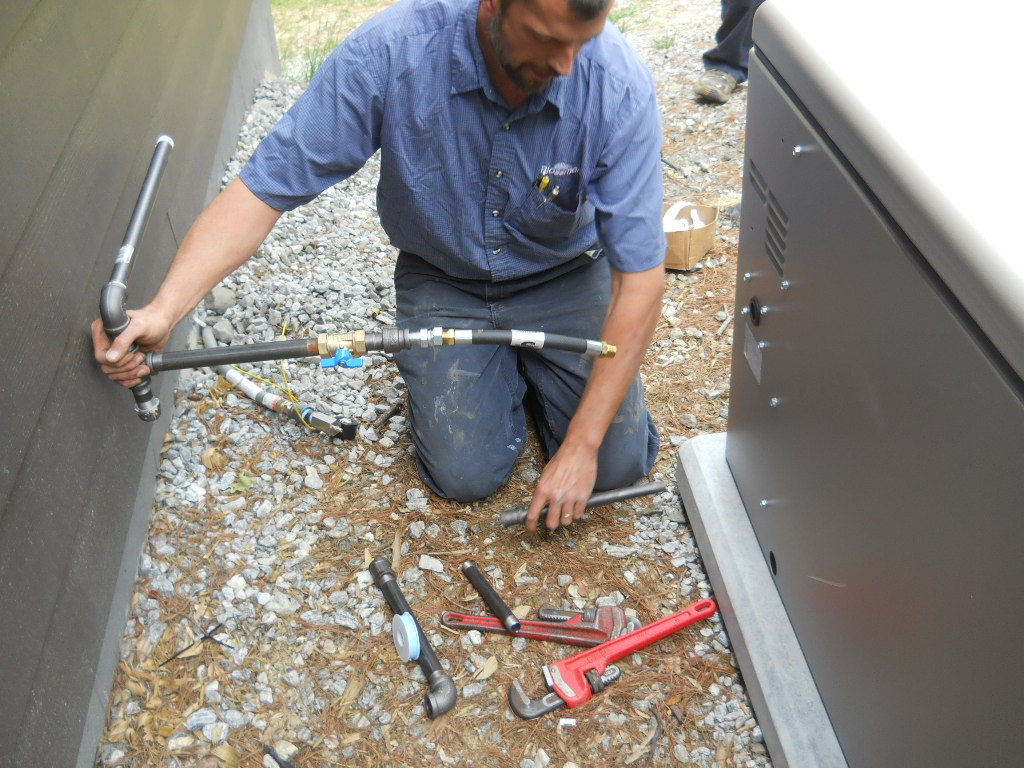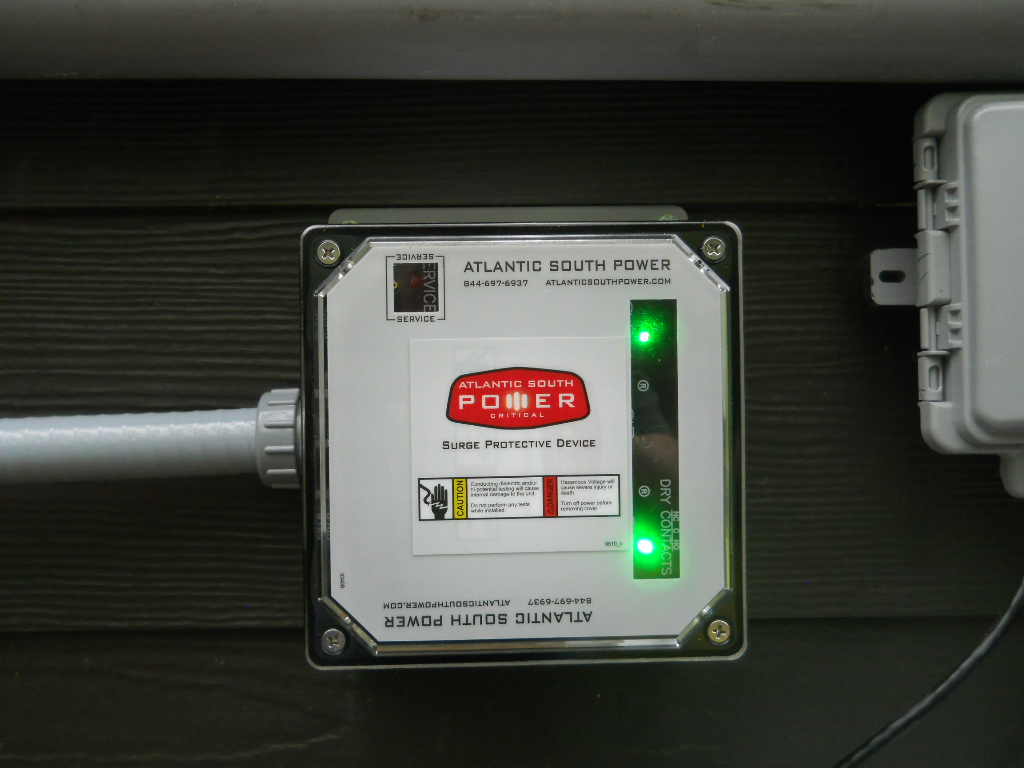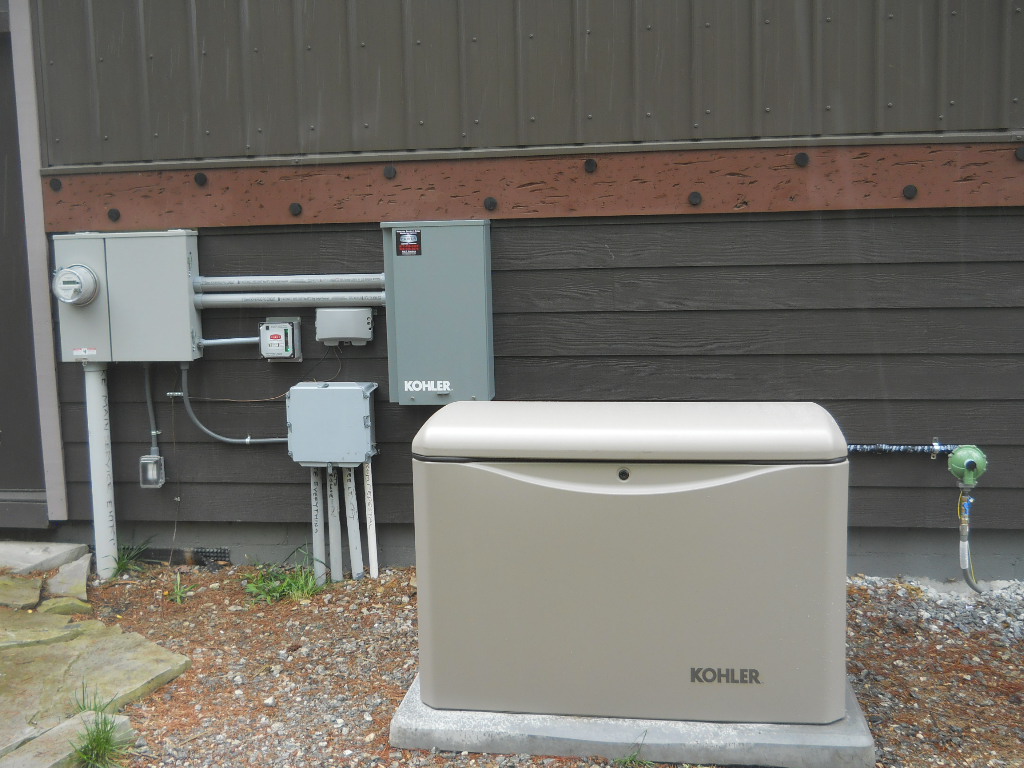Generator for Residence is about how a custom house architectural firm managed the installation of an emergency electrical power generator for a residence.
This is what you start with when you’re adding an emergency power generator to your existing electrical system for a house (above). The commercial power meter is on the left (fed with UG (UnderGround) electrical cables inside that light grey 3″ diameter down-conduit. Immediately right of that is the main disconnect (main breaker on-off (200 amps), which is fairly normal for many homes these days). The door panel to the disconnect box is open in this photo. Right of that is the Internet box. Below that is a general purpose box that has 4 conduits coming into it from UG below: Internet from the street (about 300 feet away), 2 different power lines from site lighting, and another power line coming from the gates (about 250 feet away). Right of that is a hose bibb (in this case, non-functional). Then to the right and in front of all of this is a big blank area, both on the wall and on the ground. That’s where the new generator’s going to be placed, along with its ATS (Automatic Transfer Switch).
In this case, commercial electricity is courtesy of Duke Energy, an outstanding provider of energy resources to millions of customers throughout multiple states in the SE USA. Unfortunately, trees fall down during wind & lightning storms, wiring wears and fails, underground roots damage cables, along with other problems that are not of the making of the power company. Energy companies work hard to make repairs to their infrastructure, but cannot do so immediately. That sometimes takes hours or days, or longer, depending on the severity of the problems.
And when commercial power no longer provides electricity to a house (or other facility), there is no more electricity. Almost everything inside and outside that house comes to a stop. Refrigeration, computers, lighting, pumps, probably water, garage doors and other conveniences and necessities.
That’s what an emergency electrical power generator can do: provide electricity when the commercial power goes out. That’s why obtaining a generator to come on when your commercial power shuts down can be such a wonderful convenience. Anyone who has experienced an electrical outage for any length of time knows how uncomfortable that can be. The primary motive as to why any family might want to obtain a generator is to avoid power outages in the future. This is Not the kind of small generator that you might buy at Lowes or Home Depot. Those cannot provide enough electricity to run an entire house. Whole house generators are considerably larger and more expensive. These are often 20kW or larger. There are some generators that are between the two: perhaps 7.5kW or 12kW. The problem with these medium size units is that you would have to have some expensive electrical work done to create a partial-house emergency electrical panel, that only provides power to certain circuits in the house. In this particular situation, the homeowners are having a whole house generator of 20kW installed, so they won’t have to suffer with partial service when commercial power shuts down and the generator starts.
Here’s the 20kW Kohler generator coming to the site on the back of a pickup truck (larger units will probably require larger trucks).
A crane on the back of another truck lifted the 500 pound generator from the delivery truck and into place on a specially sized concrete & foam base slab.
After setting the generator on the slab, the special team of installers installs the ATS (Automatic Transfer Switch) onto the wall.
And then the installers (who are expert electricians) connects the ATS to the Disconnect with grey electrical conduits, through which they pass thick electrical cables to allow the ATS to know when the main power shuts down, so the ATS can know that it’s time to turn on the generator.
While the Electricians are working, Gas workers are installing a special LP (Liquid Propane) pressurized (10psi) gas line from the existing gas tank line regulator on the other side of the house and around the house and connect it to the new generator.
This particular generator company designed a special breed of whole-house surge protector, that they installed into the existing main disconnect.
This surge protector provides outstanding protection against electrical surges that may occur from the commercial power company, as well as nearby lightning (but Not direct lightning). It is very important to have such a whole house surge protector. Otherwise, everything in and on the house involved with electrical power could be damaged by electrical surges: dryers, washers, refrigerators, computers, TVs, computers, coffee makers, and more. So the cost of having such a surge protector is well worth it and much less than the cost of having to replace all that equipment.
And here is the final installation. The generator’s controls are set to exercise it for 20 minutes once a week. That keeps it working properly. And then the homeowners need to pay for a yearly contract to have the generator maintained: spark plugs, oil filter, oil and related operational items.

